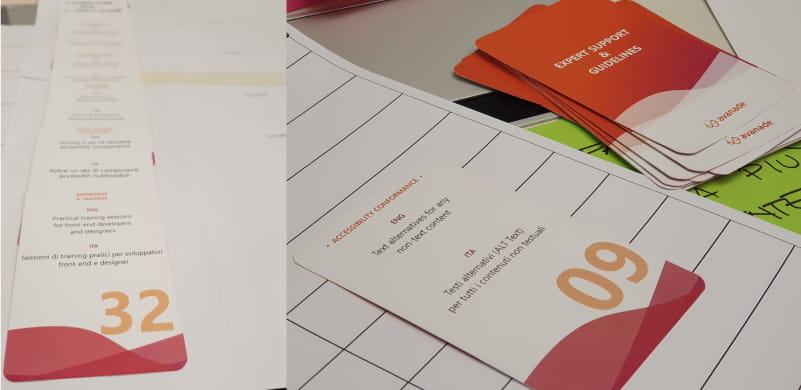3 ingredients of design thinking for successful accessibility projects
- Posted on January 17, 2020
- Estimated reading time 3 minutes

In order for companies to make digital transformation a success, that means including everyone in the design process, especially those who are physically, visually or cognitively impaired. This is what accessibility and – more general – digital inclusion is about. And finding solutions suitable for all is one of the most powerful means for innovation.
This past year, we created a cross-country Digital & Innovation Studio Team to help us define a framework for accessibility and digital inclusion as part of an offering for our clients. It included outlining the "Digital Inclusion Strategy and Guidelines" for our clients, as part of a bigger digital transformation engagements.
In the coming months, we will be applying this framework for a primary European bank that is already very far ahead in terms of diversity and inclusion, and I wanted to share this wonderful experience.
The steps we took for creating our framework for the strategy and guidelines document are pretty simple and straight forward:
- Diving deep into current best practices with a discovery session
- Inviting and involving multiple stakeholders with one or more workshops
- Consolidation of all the above into a final strategy and guidelines document
Until now, everything looks quite similar to any other typical Digital & Innovation Studio client engagement, but this framework has three ingredients that make it pretty peculiar.
1) Trustable subject matter experts. Digital inclusion, especially when we deep-dive into the accessibility field, has no space for unpreparedness. This is a subject that needs years and years of study and practice. In the Avanade Digital & Innovation Studio, we are fortunate of having some skilled professionals in this field. One of them is Toni Closa who participated in many of our digital projects related to accessibility and digital inclusion and he is an expert at planning and running user research for people with special needs. None of our framework could have happened without him and he is a mandatory member of each engagement we have.
2) Collaboration with disabled people. We are very much human-centered, here at Avanade more than anywhere else. Therefore, we need to work with a sample of people with different types of disabilities to fully understand issues and challenges. On this current client project, we collaborated with two blind people, two deaf people, and two physically-impaired people. That means making some changes to the way we run workshops:
- We have to be more careful in the way we organize the space and the tables
- We need to select ice-breakers that fit all participants
- We have to include sign language interpreters and dedicated moderators for blind people
- We had to train our team on how to be more inclusive when speaking that make us all more aware of the needs of everyone
3) Tangible tools for discussion. Working with a diverse team has some challenges, especially in keeping them all engaged in the panel discussion. As part of our framework, we developed a set of cards for facilitating workshops and focus groups – see below. The cards have undeniable advantages because they help people to stay focused, can be easily read and understood by deaf people, can be read by blind people as well with the help of the moderator or other people on the panel. Moreover, the cards can be easily translated in braille language, something we will definitively work on in the evolution of our framework.

The Digital Inclusion Strategy & Guidelines document is just the first step toward the fulfilment of an accessibility program for companies because it sets the fundamentals for assessing all the company touchpoints. The following steps entail making a proper gap analysis and improving all the internal and external touchpoints of a company. And we want to stay close to our clients during the full journey, from initial strategy to full implementation and all the necessary updates of every single touchpoint. We’re extremely proud of this work because we feel that technology has the power of making every organization more inclusive for both its employees and its customers.
Stay tuned, because Toni Closa Lorens and Roberta Capellini will soon share more details about the framework and the cards!
Learn more about the amazing work done by our Avanade Digital Innovation Studios Team.


 Thanks for subscribing. Watch your inbox for blog alerts and updates.
Thanks for subscribing. Watch your inbox for blog alerts and updates.
Comments